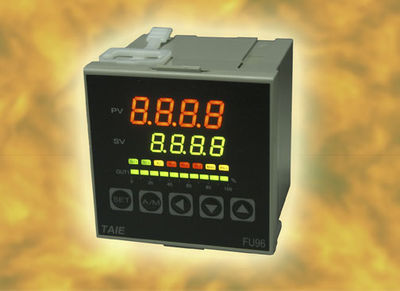
Contact Details:
CD Automation UK Ltd
Unit 9
Harvington Business Park, Brampton Road
Eastbourne
East Sussex
BN26 6TS
United Kingdom
Tel: +44 (0) 1323 811100
Fax: +44 (0) 1323 879012
Send Enquiry | Company Information

Controller handles any physical process variable
Product News Monday, June 3, 2013: CD Automation UK Ltd
Controller handles any physical process variable
CD Automation’s TAIE controllers automatically control process variables such as temperature, pressure and flow – in fact almost any physical variable that can be represented as an analogue signal.
The TAIE controller range will accept an input from almost any type of sensor. As well as the standard on/off, PID and manual control modes to choose from, auto-tune and fuzzy logic control algorithms ensure the user has the tools to achieve optimum process performance.
Temperature is the most common variable, but the principles are equally applicable to all analogue variables. A temperature control loop for example can consist of a sensor to measure the temperature, a controller and a power regulator. The controller compares the measured temperature, referred to as the process value (PV), with the desired temperature, which is the set value (SV), and regulates the output power to make them the same. The difference between the PV and SV is called the ‘error signal’.
Most industrial processes such as plastic extrusion require stable ‘straight-line’ control of temperature. The PID control algorithm, referred to as ‘three-term’ control provides exactly that. The combined output is a function of the magnitude and duration of the error signal and the rate of change of the PV.
In temperature applications, either a thermocouple or a resistance thermometer is typically used. In large process control applications, signal conditioning is normally used to convert the sensor measurement into a 4-20mA or 0-10V DC analogue signal, as well as RS232, RS485 and TTL communications.
A controller requires some means of varying heating power, flow rate or pressure to the process. At the simplest level, a relay is used to operate a contactor or solenoid valve. For more sophisticated control, logic is used to switch a solid state relay (SSR) or thyristor power controller, also known as a silicon controlled rectifier (SCR). The benefits are long life, no maintenance and the ability to rapidly switch heaters which have small thermal mass.
Alternatively, analogue control is used for positioning control valves and to drive analogue input thyristors, used with time proportional on/off (burst firing) and phase angle firing for single-phase and three-phase heating applications. CD Automation’s fuzzy logic tuning algorithm handles temperature disturbances such as an oven door opening.
Auto pre-tune and manual pre-tune offer flexibility in getting the PID terms to suit the application. With up to three independent alarms and 17 different alarm types, each alarm has its own relay. An alarm inhibiting function for each alarm type prevents an alarm being triggered during start-up.
All models will accept thermocouple, RTD, DC Linear input – all with 14-bit resolution. TAIE controllers are available in eight different types and include 48 x 48mm (1/16 DIN), 48 x 96mm (1/8 DIN), 72 x 72mm and 96 x 96mm (1/4 DIN) each with a panel depth of just 80mm. They come with a five-year warranty.
